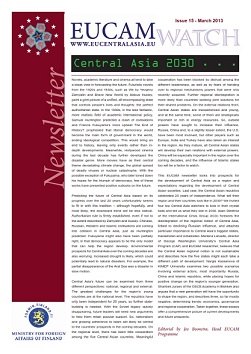Central Asia 2030...
Central Asia 2030...
Author(s): Jos Boonstra, Alain Délétroz, Marlène Laruelle, Nargis Kassenova, Shairbek Juraev
Contributor(s): Jos Boonstra (Editor), Tika Tsertsvadze (Editor)
Subject(s): Governance, Government/Political systems, Social development, Policy, planning, forecast and speculation, Sociology of Politics
Published by: CEPS Centre for European Policy Studies
Keywords: Central Asia; forecasting the future; Central Asia in 2030; political system; democracy; liberal democracy;
Summary/Abstract: Novels, academic literature and cinema all tend to take a bleak view in forecasting the future. Futuristic novels from the 1920s and 1930s, such as We by Yevgeny Zamyatin and Brave New World by Aldous Huxley, paint a grim picture of a unified, all-encompassing state that controls people’s lives and thoughts: the perfect authoritarian state. In the 1990s, in the less fantastic, more realistic field of academic international policy, Samuel Huntington predicted a clash of civilisations and Francis Fukuyama’s more upbeat The End of History? prophesied that liberal democracy would become the main form of government in the world, ending ideological competition. This would bring an end to history, leaving only events rather than indepth developments. Meanwhile, Hollywood cinema during the last decade has further developed the disaster genre. More movies have as their central theme devastating climate change, the global spread of deadly viruses or nuclear catastrophe. With the possible exception of Fukuyama, who later toned down his hopes for the triumph of democracy, few of these works have presented positive outlooks on the future.
Series: EUCAM Watch
- Page Count: 7
- Publication Year: 2013
- Language: English
- Content File-PDF

